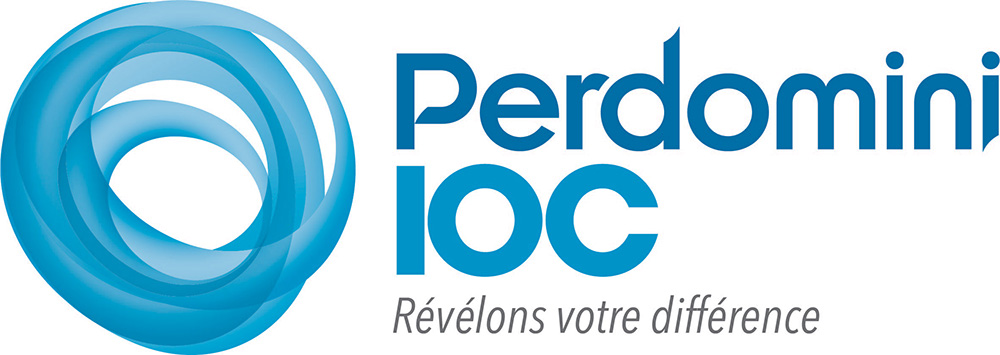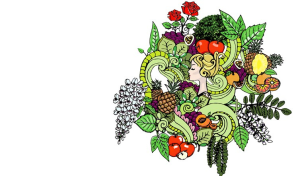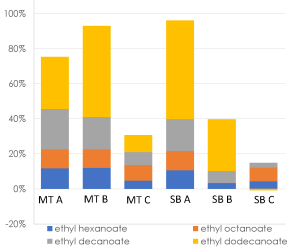Enhance yeast wellness and optimise its capacity for aroma release
From an idea conceived by the IOC group R&D team and developed in cooperation with Fondazione Edmund Mach in the Trentino region of Italy, comes NATJJATM, an innovative, 100% organic nutrient designed to enhance the health and wellbeing of yeast and optimise its capacity for aroma release.
Made up of a specially selected yeast autolysate, a zinc-rich deactivated yeast and a unique fungal-origin chitosan (from Aspergillus niger) with anti-free-radical effects, NATJJATM helps reduce the oxidative stress in the yeast cells, optimise the secondary metabolism through which the yeast releases aromas, preserves these same aromas and ensures smooth and successful alcoholic fermentation.
The results obtained show that NATJJATM effectively plays a very important role in responding to the oxidative stress suffered by Saccharomyces cerevisiae, thanks to the inclusion of a unique chitosan with anti-free-radical effects in the formula. This chitosan helps inhibit the free radicals produced through redox reactions at the beginning of alcoholic fermentation and again when the alcohol concentration begins to rise.
Without this help, redox reactions would have a negative impact on the amino acids, on the bioavailable proteins and on the membrane lipids, forcing the yeast to set in motion a series of complex chemical and biological reactions to ensure its survival.
Free radicals: all aerobic organisms use molecular oxygen for respiration, which leads to the production of free radicals. In winemaking, the biggest effect is that, as ethanol production in the grape must increases through fermentation, free radicals gradually form.
The presence of free radicals causes oxidative stress in the yeast cell, which finds itself forced to activate a number of veritable defence mechanisms, for example using ‘enzymatic strategies’, or ‘exploiting’ the presence of glutathione, a fundamental molecule for the adaptive response of S. Cerevisiae to oxidative stress.
(Jamieson et al., 1994; Izawa et al., 1996, Costa et al., 1993, Halliwell, 2007).
FIG. 1 Variation in the concentration of reduced glutathione (GSH) between NATJJATM and DAP-based nutrition
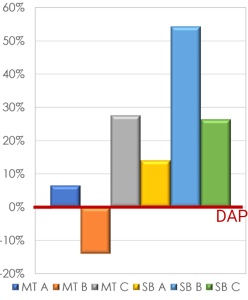
Tests conducted on 3 different batches (A, B and C) of Müller Thurgau (MT) and Sauvignon Blanc (SB)
Probable mechanisms through which chitosan combats free radicals
Chitosans can turn out to be very interesting for winemakers, as they are non-toxic, biocompatible, biodegradable, antimicrobial and antioxidant. Most studies on the antioxidant effects of certain chitosans focus mainly on these molecules’ ability to eliminate free radicals and form stable macromolecules. Therefore, as an antioxidant, chitosan can have a positive impact on the health of the yeast by protecting it from deterioration caused by free radicals. What’s more, as it’s involved in the chelation of metals, chitosan helps the yeast not to go into a state of oxidative stress by making iron, copper and other metals which could potentially trigger the free-radical-forming process less available.
Reduced oxidative stress for the yeast cell – brought about by the presence of zinc and the anti-free-radical effects of the chitosan – leads to the cell putting less effort into compensation mechanisms and therefore receiving more adequate nourishment, for example from amino acids. These are fundamental substances and utilised by the yeast, but, as they are not readily available, the yeast has to have plenty of energy in store to metabolise them.
What we can see is that NATJJATM enables the optimisation of specific metabolic flows so that all the elements needed by the yeast can be biosynthesised. This allows the yeast to grow healthy and strong in the best possible conditions. This also optimises the biosynthesis processes involved in the transformation of aroma precursors into specific volatile compounds.
FIG 2. Variation in the fatty acid ethyl ester levels post-AF obtained using NATJJATM nutrition in comparison with a standard yeast autolysate
Tests conducted on 3 different batches (A, B and C) of Müller Thurgau (MT) and Sauvignon Blanc (SB)
FIG. 3 Differences in the post-AF fatty acid ethyl ester levels obtained using NATJJATM nutrition and with a standard yeast autolysate
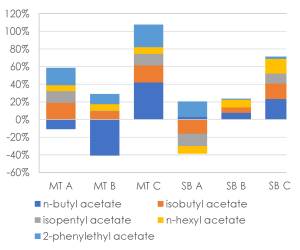
Tests conducted on 3 different batches (A, B and C) of Müller Thurgau (MT) and Sauvignon Blanc (SB)
FIG. 4 DIFFERENCE BETWEEN THE QUANTITIES OF THIOLS OBTAINED USING NATJJA NUTRITION AND WITH A STANDARD ORGANIC NUTRIENT
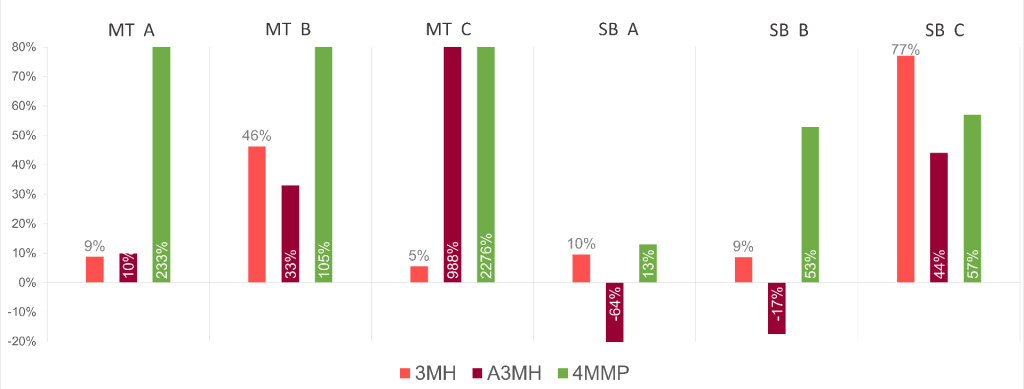
Tests conducted on 3 different batches (A, B and C) of Müller Thurgau (MT) and Sauvignon Blanc (SB)
The results of the tests on aromas and other sensory properties confirm that NATJJATM is an effective and innovative pathway to yeast nutrition. The anti-free-radical impact of NATJJATM is an assurance that the oxidative stress suffered by the yeast will be lowered and the aromas released will be preserved. This means that the wines produced will express their varietal potential (thiols) and fermentation characteristics (fatty acid ethyl esters) to the full.
The ideal time to add Natjja to a wine is immediately after inoculating the selected yeast, as this is the time when aroma precursors are assimilated.
NATJJATM is suitable for making white, red and rosé wines from both neutral and aromatic grape varieties. Whichever type of grapes you’re vinifying, NATJJATM will draw out the inherent potential of the must to give you a sensory profile that perfectly matches the profile of the grapes and your winemaking goal.
Want to know more? Contact the Perdomini-IOC technical staff or the area agent closest to you
and try our range of organic nutritional products directly at your winery




